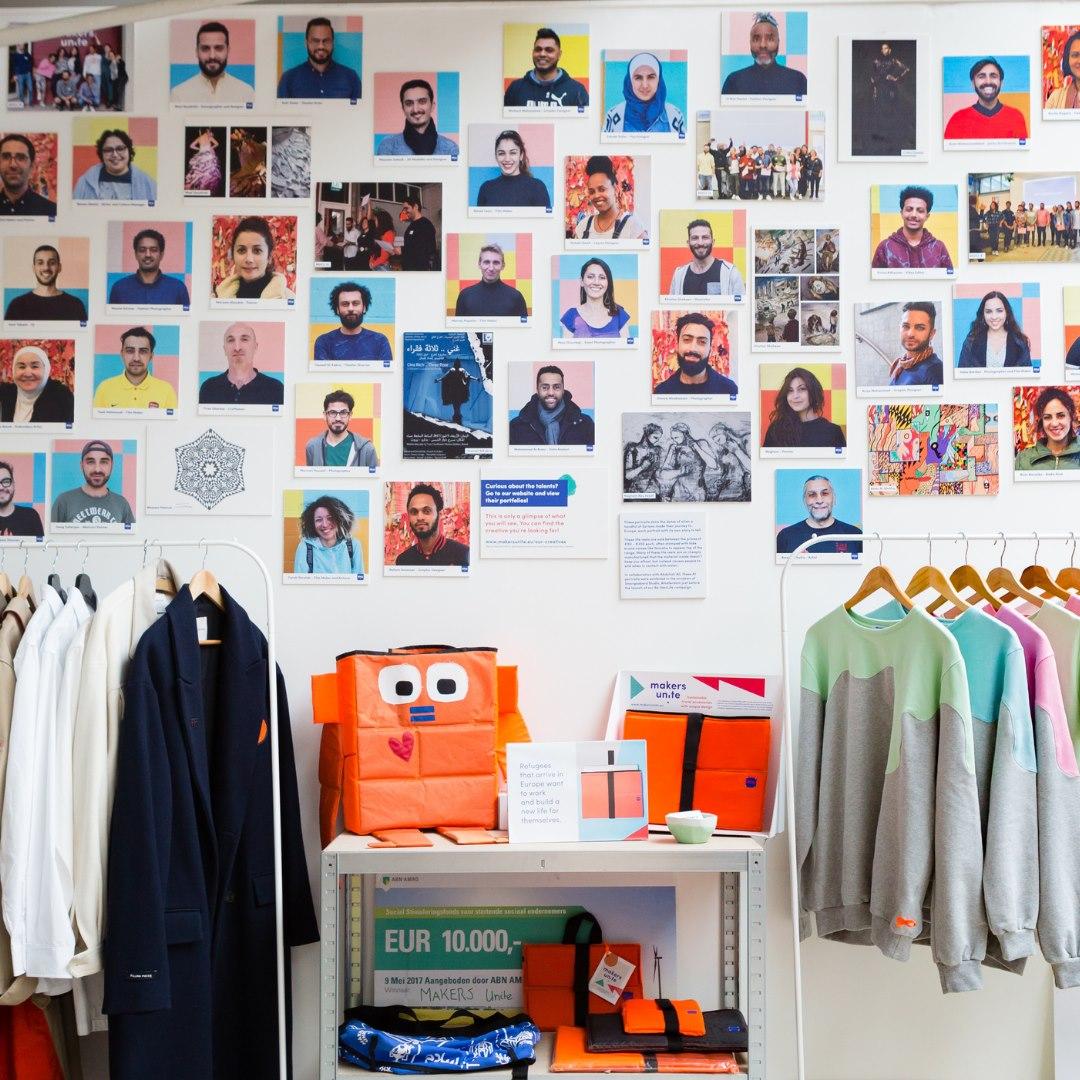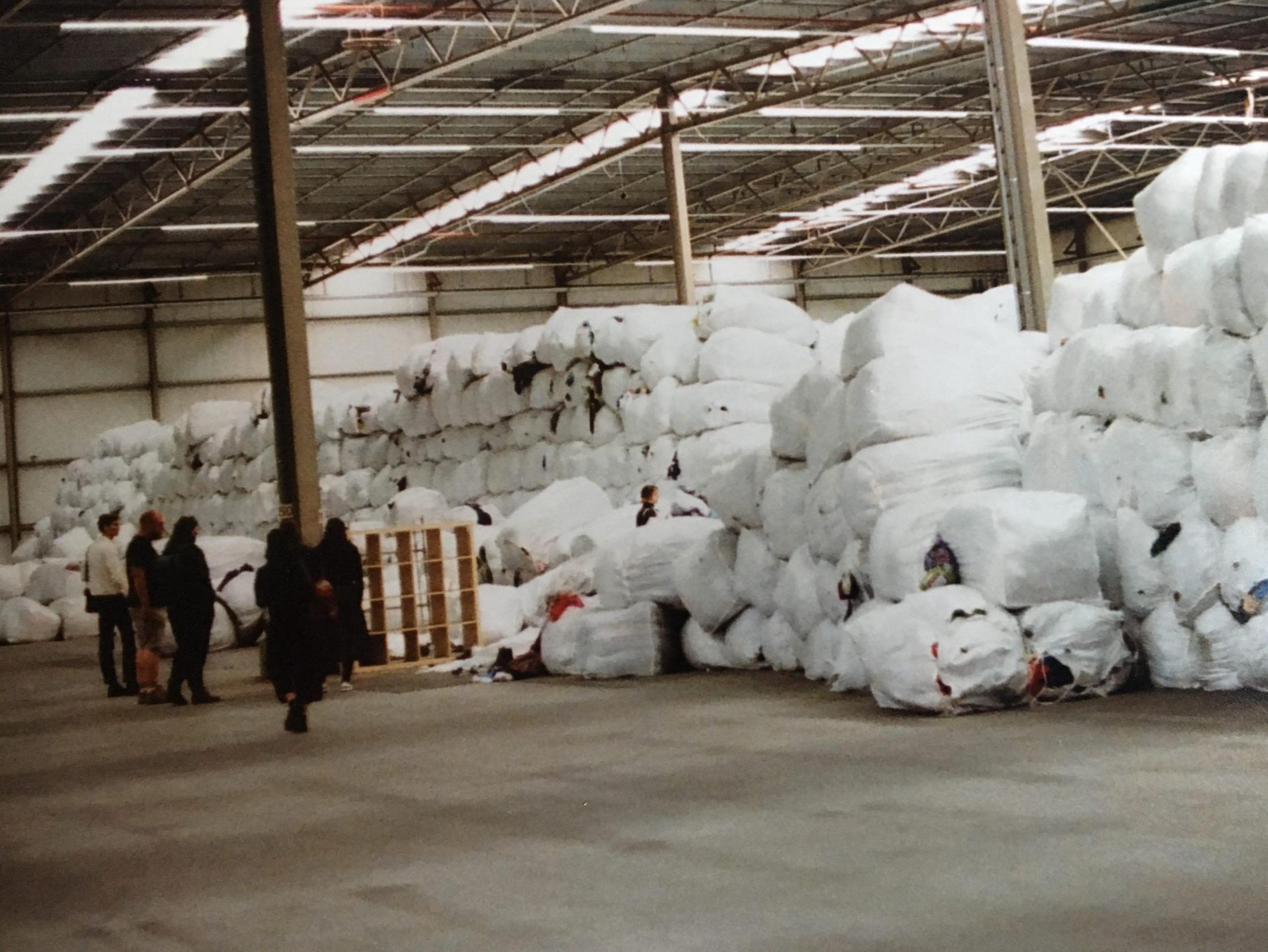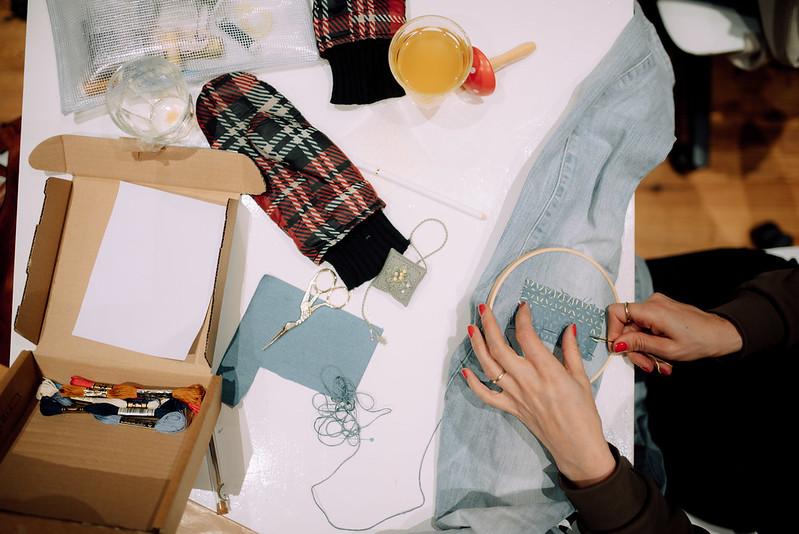The Reflow project (2019 - 2022) researches how to realise sustainable circular economies in six European cities. Within this project, Amsterdam has focused on circular textile streams in the city. What are the learnings of the last three years? Waag caught up with Roosmarie Ruigrok, Reflow’s project leader from the City of Amsterdam.
Hi Roosmarie, what is Reflow about in Amsterdam?
We’re reframing how we deal with textiles in the city. Citizens buy their clothing, wear it and discard it, and it’s up to the municipality to keep the city clean. But there’s also the industry. We investigated how all these different parties relate to each other, and in the end we want to bring them together in our plan towards circular textile streams. We’re currently working on a vision and a circular roadmap for textiles in the city, that will be presented during the Reflow Circular Textiles Festival on the 19th of April, at Pakhuis de Zwijger. The roadmap allows the municipality to undertake long-term actions on circular textiles in the future.
In Amsterdam, project partners Pakhuis de Zwijger, BMA Techne, Waag and the City of Amsterdam collaboratively focused on textiles. What was the first step towards a circular stream of textiles in the city?
We started mapping out the textile streams that enter the Netherlands, and secondly the part enters through Amsterdam. Afterwards, we went to see what can be found in the residual waste and in the textile containers.
What did you notice?
That there’s an enormous amount of clothing made from polyester. On a worldwide scale, textile waste consists of 60 percent of polyester, and 40 percent of other materials. In the Netherlands however, 60 percent of the clothes still consist of cotton, whereas 40 percent is made from other materials. You could say that the Dutch still value cotton highly when it comes to textiles. I’m very happy about that, because cotton is a beautiful material that can last for a very long time.
Let’s say you’re in a retail shop and have the option of choosing between recycled polyester or virgin cotton. What would be the best choice in your opinion?
I would go for cotton. Recycled polyester is made out of recycled pet bottles. A lot of micro fibers are released in the process of adding pet bottles to textiles. Packaging material really should stay packaging material. In the end, we would just want to stop producing products based on fossil fuels in general. We will have to stop using oil, and that will also lead to a decrease of polyester production. A lot of polyester is made from residual waste from the mobility industry.
What else is important in the achievement of circulair textile streams in the city?
During Reflow, we learned that we might be able to spin new yarn out of the old clothes that are collected from the textile bins in the city. This is possible with mechanical recycling thatrecycling, that shreds old textiles before they are spinned into new yarn.
Next to that: rethink. If you’re done with a garment, what else can you do with it? Couldn’t we fix it? Or swap it, or bring it to a secondhand store like Dress for success? Or is it possible to make something else out of it? You might be able to make a new bag out of jeans, or to take the garment apart and create a patchwork pillow.
One of the things you’ve arranged within the Reflow project is the Amsterdam Citypass discount action. Citypass holders (for Amsterdammers with a low income) can now get a 40 percent discount at the tailor. What was the idea behind it?
We would like everyone to join in on the circular economy. That’s why I thought about ways to arrange that. The Dutch word for ‘sustainable’ is ‘duurzaamheid’, and ‘duur’ also means ‘expensive’. This relates to the fact that biologic, organic textiles are often more expensive than non-organic clothes. How can one live a sustainable life without it having to cost too much extra? Because as it turns out, people with a small income who struggle to live from day to day and from payment to payment, often seem to buy more ‘nonsensical’ things.

Research by Irene Maldini (Can design confront consumerism?, Hogeschool van Amsterdam) shows that in general, people in the Netherlands haven’t worn 30 percent of their wardrobe over the last year. Of that percentage, around one third of the clothing is torn or has a defect. What people would usually do is buy a cheap replacement and throw away their favorite garment. So I thought: wouldn’t it be great if Citypass holders can get a discount at the tailor? This way, they can repair their favorite garment and give it back its prominent place in their wardrobe. And they won’t have to buy new clothes!
What do you mean by nonsensical things?
I mean very cheap clothes, like ten cheap T-shirts that cost five euros in total that get torn very quickly. And once they’re ripped, the shirts won’t be repaired. They’re used to clean a bicycle and afterwards the fabrics are discarded in the trash. Next, one needs to buy new clothes again. Research shows that people with a relatively small income spend more money on clothing and textiles in comparison to people with a middle sized income.
How did you bring this deal with the tailors into existence?
We visited five tailors in every district of the city, to ask if they wanted to join in on the deal. Everybody said yes, because they didn’t have much income at the time because of covid. In the end, we managed to get thirty tailors to connect to the Citypass. In September, the action started by us giving a 90 percent discount on one piece of clothing for everyone with a Citypass. From 1 January 2022, it became a one-year-promotion of a 40 percent discount for repairing as many garments that you need. The 40 percent discount at the tailor gets covered by the city’s poverty reduction fund.
How is the action going so far? How many people have used the discount already?
Up until now, around 6.000 garments have been repaired. This has created more work for tailors, it has created awareness about repairing clothes, 6.000 garments have been saved from the incinerator and people were able to participate in the circular economy. We hope to have repaired another 10.000 garments by the end of this year.

Do you have any last advice for people who would like to deal with their textiles in a more circular way?
They can visit the Swapshop (Haarlemmerdijk, Amsterdam), where they can swap their old clothes. The Swapshop also takes in clothes that aren’t hip and trendy enough for the Amsterdam people and then sorts them into the textile bin. What people often don’t know either, is that shoes and plush toys are also allowed to put into the textile bin. And a last call to action: never ever throw your textiles in the general waste bins anymore.
Does this mean that a ripped garment can also go into the textile bin?
Yes. The more we can collect of each material, the more it allows us to shred the fabrics and spin new yarn out of it.
Read the last blog in the Reflow series as well: Circular Textiles: 7 Things You Can Do.


